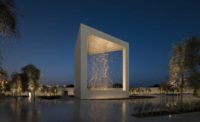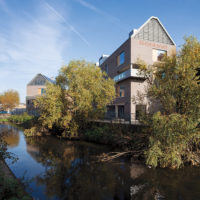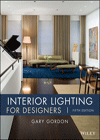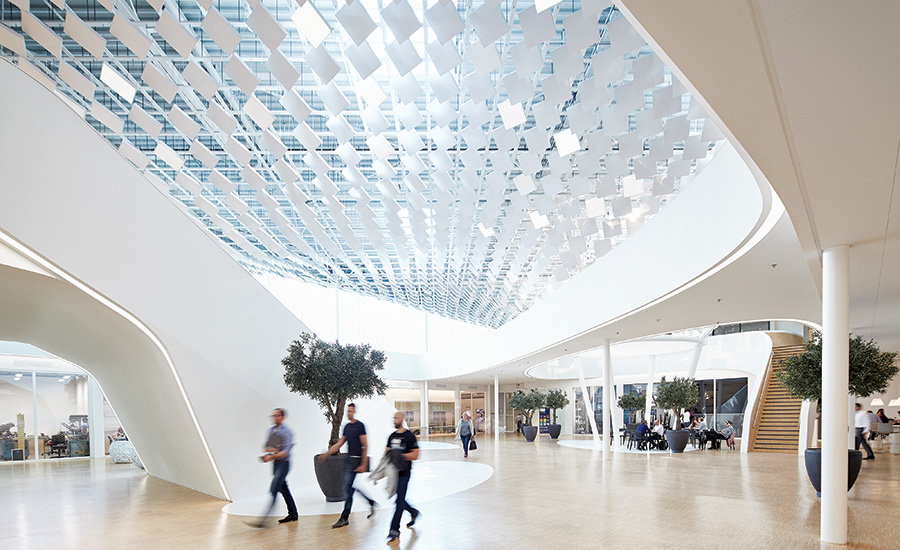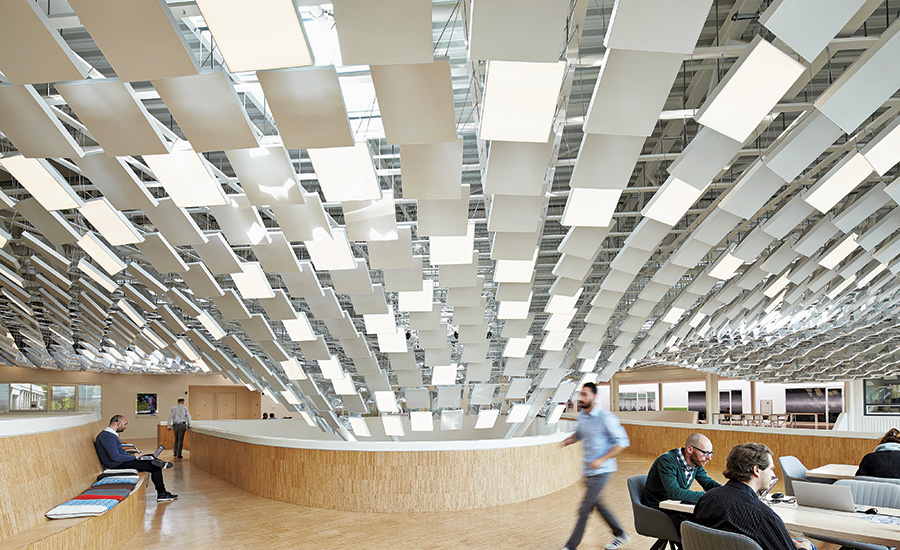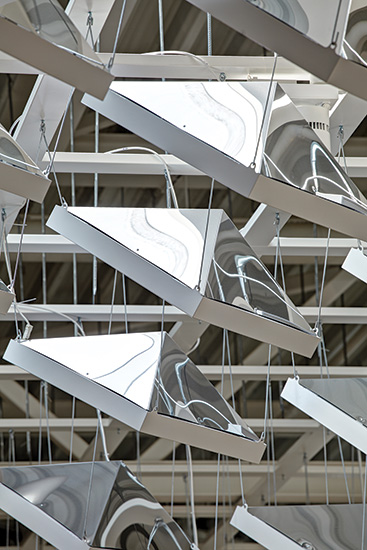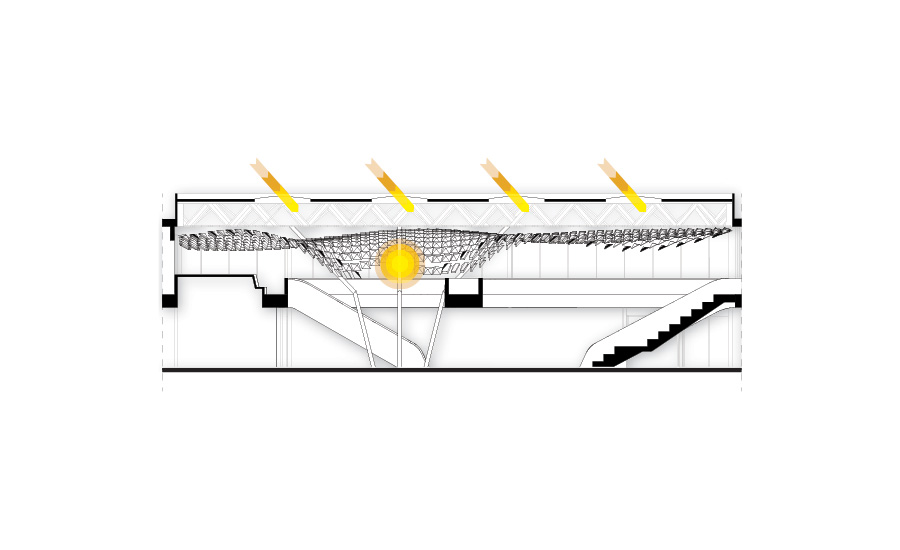“Good lighting is about more than getting the right quantity of lumens in the right place; it’s people-centric,” says Pierre-Yves Panis, head of design at Philips Lighting. “We try to consider the use of light beyond illumination, to enhance the experience of everything you do.” This ethos is reflected in the design of the lighting manufacturer’s new headquarters in a 1960s building on the Dutch city of Eindhoven’s High Technology Campus, which has been remodeled by the Stuttgart, Germany, office of the firm LAVA (Laboratory for Visionary Architecture). At its heart is an expansive atrium, 33 feet high, conceived as a multifunctional hub where both planned events and chance meetings might take place, to foster a culture of creative cross-disciplinary collaboration. To draw people into the space, LAVA created an immense interactive sculpture that resembles a pixelated tree canopy, bulging and billowing overhead. Its fragmented surface registers an ever-changing play of natural and electric light, governed by a bespoke control system that adjusts the ambience over time and in response to the activities taking place within the space.
The atrium is a new addition to the building, created from a former courtyard, and the desire to preserve a sense of connection to the outside inspired the sculpture’s arboreal character. It was refined and abstracted through “constant reengineering and a focus on what really matters,” says LAVA director Alexander Rieck. Four canted steel columns suggest the trunk of the tree, but adding branches would have been inelegant and expensive: “The smart solution was just to create the leaves and suspend them from a ceiling in a way that creates the desired form,” he says. Parametric design tools were used to generate “a complex geometry made up of very simple elements.”
There are 1,500 seemingly identical leaves, each 2 feet square, of which 500 are light fixtures manufactured by the client. Those light-emitting panels incorporate both acoustic absorption and warm-white LEDs that give an even distribution of light across the face. Independent controls mean that, as some panels flicker into life, others are fading into shadow, apparently at random. Another 50 fixtures–LED theatrical lights–are clustered at the top of the “trunk,” giving off a golden glow from the heart of the structure. Pyramidal metal reflectors fixed to the reverse of each leaf bounce some of this light backward onto the faces of adjacent panels, creating myriad shimmering accents that recall the way that sunlight filters through treetops or sparkles on water.
The metallic reflectors also disperse the daylight that fil- ters through the structure from skylights above. The lighting-control system developed by LAVA calibrates the warmth and brightness of electric light to daylight conditions throughout the year, in a process of constant change that is sufficiently gradual to seem natural. “The light is very unobtrusive,” says Panis. “I often take my laptop and work in the space and feel as though I am working outside, with changeable natural light but also with an overall sense of comfort.”
A form of artificial intelligence is used to generate non-repetitive patterns of illumination, so that the installation always appears fresh to both staff and returning visitors. An open-ended design allows for the future addition of sound or movement sensors that gauge the intensity of activity in different parts of the atrium, or for the installation to serve as a test-bed for new ideas about lighting. “Light is the easiest way to change an environment over time without a lot of investment,” says Rieck.
Though sophisticated technology underpins the scheme, it is the means to an end, not the end in itself. “We all realize that with the products now available, you can do just about anything,” says Rieck, “but simply demonstrating that capability is not interesting. At Philips Lighting, the emphasis is not on the sources of light but the space made by light.”
CreditsArchitect: Laboratory for Visionary Architecture (LAVA) — Alexander Rieck, Tobias Wallisser, Chris Bosse, directors; Nuno Galvao, Matthijs la Roi, Stephan Markus Albrecht, Sebastian Schott, Mariusz Polski, project architects
Adviesbureau Tielemans (structural); Deerns (m/e/p)
Beersnielsen, Philips LiAS (lighting); Inbo, JHK Architecten (design development); Brink Groep (project management); BICG (space planning)
Heijmans
|
SpecificationsLighting: Philips — Ecophon Soundlight Comfort system (light tree panels), Selecon Rama LED fixtures (theatrical); eW cove MX powercore (concealed); RC461, LumiStone SmartBalance (office)
Ecophon (acoustic); wood (Derako)
Moso (bamboo); Desso (carpet); Forbo (linoleum); Durabella (terrazzo) |












